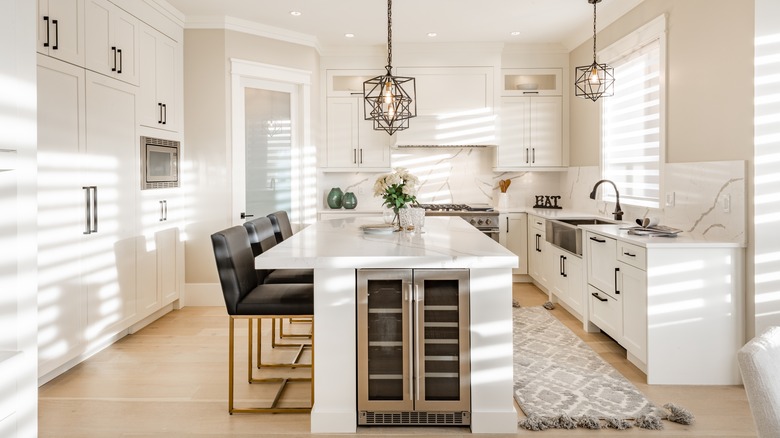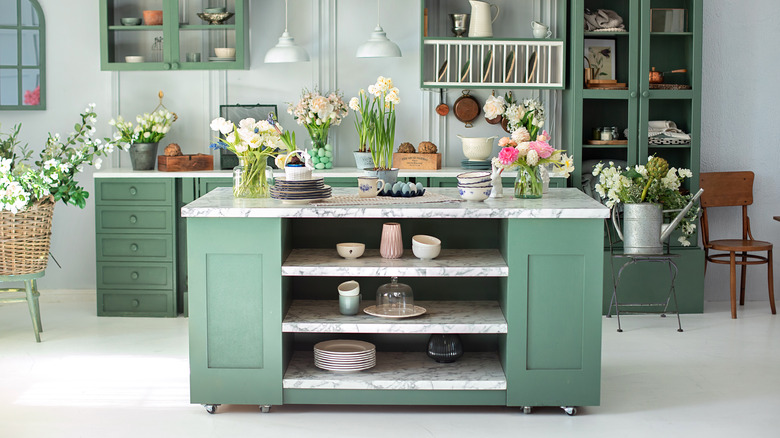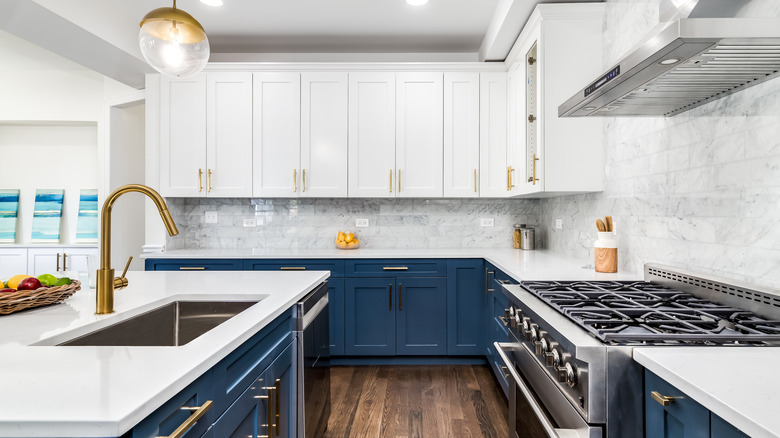Don't Make These Mistakes When Designing Your New Kitchen Island
If you have space in your kitchen, there are very few downsides to adding a kitchen island. They're an incredibly practical and functional addition to the room and can even add resale value to your home. They can also add decorative value to the room, both in the design and placement of the island itself and what you put on it.
However, if done wrong, a kitchen island is much more of an inhibitor in your kitchen's overall flow and design. An oversized, bulky island may provide extra workspace, but it can also be hard to move and work around, on top of being a potential eyesore. Islands aren't like a bad paint job that can be easily and affordably fixed, either — once it's there, it's there, and it will be very difficult to remove or correct any errors. This is why you should be aware of what mistakes to avoid before designing your kitchen island.
Pretty but useless
Kitchen islands are meant to be a functional addition to your kitchen first and foremost. While having extra counter and preparation space is helpful, the same function can be achieved with a much more affordable and less permanent rolling island or kitchen table. One of the biggest mistakes you could make with your island design, then, is making it simply extra counter space.
The best kitchen islands have a combination of useful additions — cabinet space, drawers, hidden trash cans, open shelving, a built-in sink or stove, and so on. Some people even add mini fridges, wine coolers, bookshelves, and more. Otherwise, it's just an expensive and permanent box sitting awkwardly in the middle of your kitchen.
That isn't to say your island should be purely functional, either. Again, if you only need shelving or cabinets, you could buy much cheaper furniture to fulfill the same purpose. Also, make sure the colors and materials are cohesive with the rest of your kitchen. They don't have to match — in fact, it's a great opportunity to add contrast — but they should flow. And don't overlook crucial details, like the hardware, under the counter, inside any drawers or cabinets, etc.
Bad layout
Whether you're designing your kitchen from scratch or just adding an island, another major mistake you could make is not considering the complete layout of your kitchen. To begin, your island shouldn't be so large that it's impractical or not in keeping with the rest of the kitchen — don't add a huge, boxy island to a small, closed-in kitchen. Similarly, it shouldn't be too small, or it'll look awkward and out of place.
More importantly, though, is making sure your kitchen is still functional with the placement of your island. For example, if you install a stove on your island, ensure there's enough space for the doors to comfortably open while still giving you enough space to move around it. The same can be said for any surrounding appliances — refrigerators, pull-out freezers, cabinet doors, etc. If you want to include a dining table, make sure the island doesn't take up too much space on the other side, either. Or, consider turning the back end of the island into a breakfast nook.


